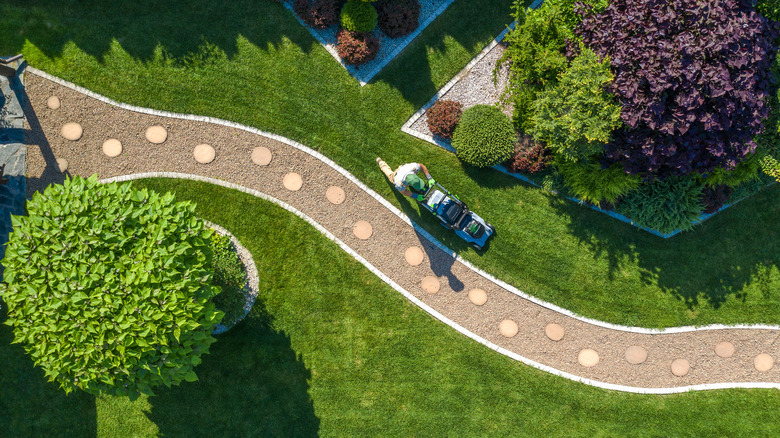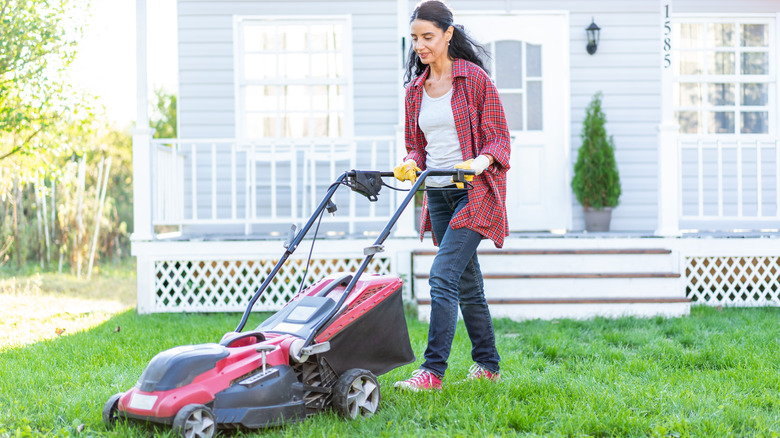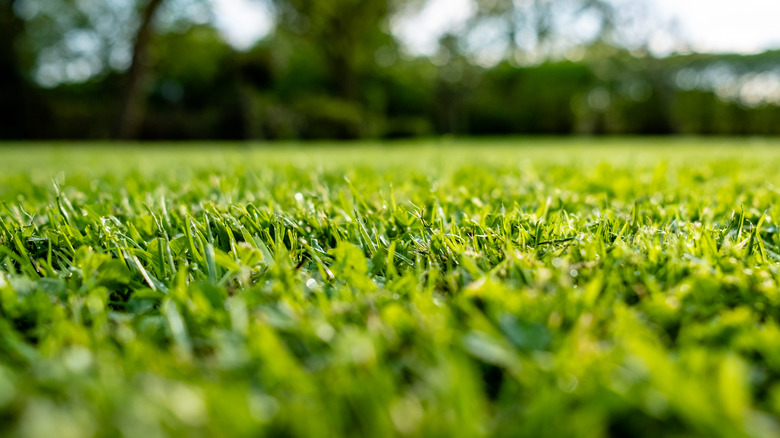How Long After Planting Grass Seed Should You Wait To Mow?
After seeding your lawn, you may be wondering how long to wait before you can mow your new, freshly grown grass. It's best to hold off on starting up your lawn mower until the grass grows about an inch higher than the desired length, or it's one-third longer than the height you want it to be. After planting grass seed, it can take four weeks or more for the grass to be tall enough to mow. If the grass is growing more slowly, it may take as long as two months before it'll be ready.
A newly seeded lawn requires the longest wait time before mowing because the seeds need time to germinate; however, using sprig or sod will take less time. While sod can sometimes be mowed as quickly as two weeks after installation, this can damage the seedlings, and it's best to wait for four weeks. Sprig generally takes three to six weeks, but you can check if it's ready by gently pulling at the corner. If the turf is attached to the soil, then you're good to start mowing.
How to mow newly planted grass
When mowing your new grass for the first time, it's important not to cut too much. Mowing more than one-third of the height of the grass can send it into shock and cause damage. While this is especially true for newly planted grass, mowing your lawn too short at any point in the season can be stressful for it. If you want to measure the length of your grass to ensure you're cutting the right amount, use a tape measure or ruler and measure from the soil to the tip of one blade.
Always make sure your grass is completely dry before you mow, since wet or damp grass can become tangled and the roots are more likely to get ripped out of the ground. Using sharp blades on your mower can also help ensure you get a clean cut. Once your grass has been mowed for the first time, it's good to mow it every week. If you've overseeded your lawn, you may need to mow it more often, but letting the seeds rest will help your grass grow healthy and strong.
Taking care of your seeded lawn
Watering, feeding, and weeding your lawn are also important for steady growth. When you first plant your grass seeds, you should keep the first inch of soil damp — but not soaked — by misting it a few times a day, depending on the weather. When the grass begins to grow, you'll want the first 2 inches of soil to remain moist. After you've mowed your grass for the first time, you can soak the soil once or twice a week, depending on how much rain is expected.
About three weeks after seeding, you can feed your lawn with fertilizer that's designed for newly planted grass. If you notice weeds sprouting up in your new lawn, it's best to ignore them until the grass has been mowed three or four times, since weed killer can harm young grass. If you use an herbicide that's specifically made for seeding grass, you should be able to get rid of those weeds sooner.


